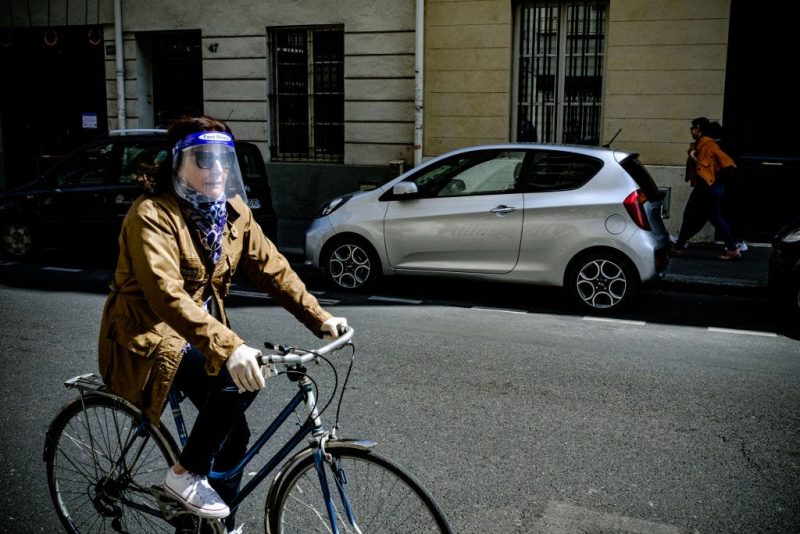- Lockdowns due to the coronavirus pandemic have had an extreme, unprecedented environmental impact.
- In April, global carbon emissions per day were 17% lower than they were on average the year prior, a new study found.
- A drop in emissions from cars, buses, trucks accounts for 43% of the decrease.
- Total carbon emissions in 2020 be 4% lower than last year, even if all countries reopen by mid-June.
- Experts warn these environmental gains will be short-lived if governments don’t consider carbon-emissions goals when rebuilding their economies.
- Visit Business Insider’s homepage for more stories.
An environmental silver lining is emerging amid the coronavirus pandemic: Many people have stopped flying and aren’t driving to work, leading to a drastic drop in carbon emissions.
A study published Tuesday in the journal Nature Climate Change reveals that global carbon emissions per day in April were 17% lower than the average daily emissions in 2019. The results showed that average daily emissions decreased by 18.7 million metric tons of carbon relative to last year. That’s an emissions level comparable to the year 2006.
“We’ll see global carbon emissions drop at least 4% this year and possibly 7% or 8%,” Robert Jackson, a co-author of the new study and chair of the Global Carbon Project, predicted for 2020 as a whole. “Either way, it will be the biggest one-year drop since WWII, and possibly ever.”
The biggest drop came from reduced ground transport

In order to quantify the drop in carbon emissions, the study authors examined emissions data from more than 69 countries, including the US, and 30 Chinese provinces. The sampling represents 85% of the world population and 97% of global CO2 emissions.
In early April, the researchers found, the regions responsible for 89% of global emissions were under some type of lockdown. So they split the lockdowns into three categories based on levels of severity, then estimated the impact on residents' normal daily activities (and the associated effects on carbon emissions).
They found that countries under the most severe stay-at-home orders, which they defined as "mandatory national lockdowns that require household confinement of all but key workers," experienced a 50% daily decrease in surface transport (like trips in cars) and a 75% daily decrease in air travel.
Those two sectors saw a 36% and 60% decrease in emissions, respectively.
The drop in emissions from surface transport accounted for 43% of the total decrease in daily global emissions compared to 2019. That's because air travel contributes to less than 3% of annual carbon emissions, while ground transport contributes nearly 10 times that.
In total, the researchers estimated that emissions between January and mid-April dropped by a total of 1,048 million metric tons compared to last year's 12-month average. About 23% of that drop came from China, 20% from the US, and 9% from India.
Emissions fell, on average, 26% in countries at the peaks of their lockdowns.
Annual global carbon emissions could fall by at least 4% this year
The 17% decrease in daily CO2 emissions is "extreme and probably unseen before," the study authors wrote.
Still, that drop only brings emissions in line with where they were in 2006, which highlights how much emissions have spiked in the last 14 years.

Before the pandemic, global carbon emissions had been rising by about 1% per year for the last decade, according to the new study.
But 2020 will buck that trend, regardless of when the world emerges from lockdown.
If pre-pandemic conditions return by mid-June - meaning non-essential businesses reopen and air and vehicle travel resumes at typical levels - annual global carbon emissions will still likely fall by 4%. If some lockdowns and travel restrictions persist through the end of the year, that drop could be even bigger: closer to 7%.
According to Jackson, that's the level of emissions reductions the world needs every year to meet the climate goals set in the Paris climate agreement, which aims to limit global warming to 1.5 degrees Celsius.
"Locking people at home isn't a sustainable way to cut greenhouse gas pollution," Jackson told Business Insider.

The drop in emissions will be temporary unless governments incorporate climate goals into rebuilding plans
Corinne Le Quéré, the lead author of the new study, warned in a press release that "these extreme decreases are likely to be temporary though, as they do not reflect structural changes in the economic, transport, or energy systems."
She and her colleagues wrote that world leaders need to incorporate climate-change goals into their economic rebuilding efforts - by investing in clean energy, for example.

"Stimulus funding from the 2008 crisis helped jump-start wind and solar production. Today, COVID-19 and stimulus funding can catalyze personal mobility and electric vehicles coupled to renewable power," Jackson said.
He added that lockdowns could change the way people think about getting around.
"People are reimagining transportation without the internal combustion engine," he said. "We could have blue skies every day without staying home by walking, biking, and driving clean electric vehicles."










